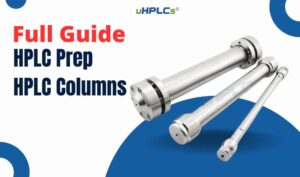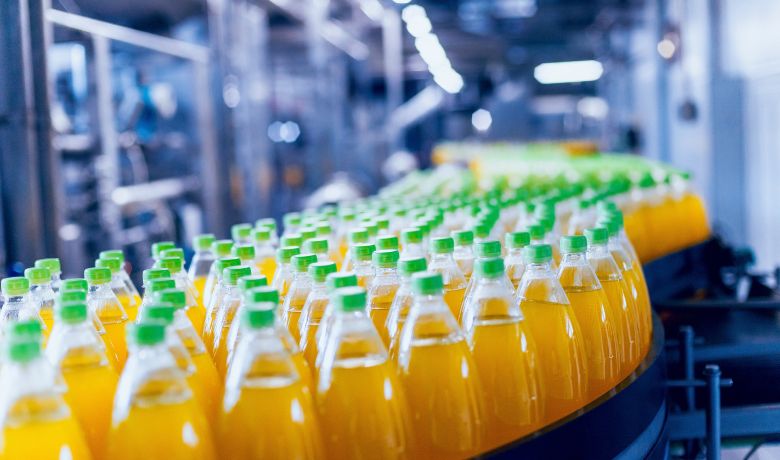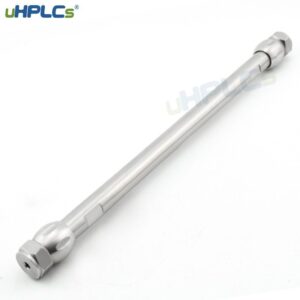Food and Beverage
Home » HPLC Application for Food and Beverage
Need Help ?
Contact uHPLCs Today for Any Questions for HPLC / UHPLC
+(86) 0755-28502380
sales@uhplcs.com
Contact Us
Recent Posts

Types of HPLC Solvent Filters and How to Choose
Introduction In High Performance Liquid Chromatography (HPLC), the purity of solvents is paramount for achieving

HPLC Prep HPLC Columns Full Guide
High-performance liquid chromatography (HPLC) is a workhorse technique in labs worldwide, separating complex mixtures into
Why HPLC Application for Food and Beverage
High-Performance Liquid Chromatography (HPLC) has become a powerful analytical tool in the food and beverage industry, helping to maintain safety standards, assure product quality, and comply with regulatory requirements. HPLC’s unmatched capability to separate, identify, and quantify a diverse array of compounds has led to its wide acceptance and application in the analysis of food components, additives, contaminants, and nutrients.
From checking the authenticity of ingredients, detecting adulterants, and measuring nutrient content, to ensuring consistency of flavors and evaluating the safety of food packaging materials, HPLC has a critical role. It provides precise, reliable, and sensitive analyses, capable of detecting trace amounts of compounds that may affect the safety, quality, and marketability of food and beverage products. In the wine industry, for instance, HPLC is used to measure sugar content, acid composition, and the presence of other compounds that can influence wine quality and taste.
Moreover, given the complexity of food matrices, the choice of the appropriate HPLC method, including the selection of columns, mobile phases, and detectors, is fundamental to obtaining accurate results. Advances in HPLC technology, including the development of new columns and the improvement of detectors, continue to expand the potential applications of HPLC in the food and beverage industry. In essence, HPLC remains an indispensable analytical technique in the quest for food safety and quality.

HPLC Application for Food and Beverage
High-Performance Liquid Chromatography (HPLC) has pivotal applications in the food and beverage industry due to its ability to separate, identify, and quantify various compounds within complex mixtures. Its key applications encompass:
Food Quality and Safety: HPLC is used to detect and quantify food additives, preservatives, contaminants, and natural toxins to ensure food safety and compliance with regulations.
Nutrient Analysis: It provides an accurate and reliable method for the analysis of nutrients, such as vitamins, amino acids, and fatty acids, contributing to nutritional labeling and dietary research.
Authentication of Ingredients: HPLC helps authenticate food products and ingredients by detecting food fraud, such as the use of inferior or incorrect ingredients, and adulteration, such as the dilution of high-value products.
Flavor and Aroma Profiling: The technique can identify and quantify flavor compounds and aromas, which can be used to improve product quality and consistency.
Packaging Safety: HPLC can detect potential contaminants that can leach from food packaging materials into food products, ensuring packaging safety.
Beverage Analysis: In the beverage sector, HPLC is employed for the quality control and compositional analysis of various beverages, such as wine, beer, and spirits, by detecting and quantifying sugars, acids, alcohol, and other components that affect flavor and quality.
In essence, HPLC is a valuable tool in the food and beverage industry for quality control, product development, and regulatory compliance. Its precision, sensitivity, and versatility make it an essential part of modern food and beverage analysis.
What you should care about HPLC Consumables if Deal HPLC Analytic for Food and Beverage ?
If you are involved in HPLC analysis in the food and beverage industry, here are some crucial considerations when it comes to HPLC consumables:
Column Selection: It’s crucial to choose the right column for your specific analysis. The choice depends on the nature of the analytes (polarity, size, etc.), the complexity of the food matrix, and the required resolution. Specialized columns are available for certain types of analysis, such as sugar, fatty acid, or pesticide analysis.
Sample Preparation: Proper sample preparation is vital to protect the HPLC system and obtain accurate results. Given the complexity of food and beverage matrices, you might need to use techniques like extraction, filtration, and derivatization to prepare samples.
Solvent Quality: Always use HPLC grade solvents to maintain the analytical performance of the system and prevent contamination. The choice of solvent will depend on the type of column and analytes.
Filters and Frits: Regularly inspect and replace the filters and frits to prevent column clogging and damage to the pump due to particulates in the samples.
Maintenance of Seals and Tubing: Regularly inspect the seals and tubing for any leaks or wear. It’s important to replace these parts periodically to ensure optimal system performance.
Storage of Consumables: Store columns and other consumables properly to maintain their performance. For example, columns should be flushed with an appropriate solvent and sealed when not in use.
Remember, maintaining your HPLC consumables is essential not only for the longevity of the HPLC system but also for the accuracy and reliability of your results. It’s always good to follow the manufacturer’s recommendations and consult with a chromatography expert if needed.

Frequently Asked Questions
Duis condimentum nunc metus, maximus porta velit temporin. Intincidunt leo viverra, sodales ex eu, posuere purus. Duis in augue vestibulum, aliquet nulla vitae, tempus tellus.
High-performance liquid chromatography (HPLC) is extensively employed to detect and quantify contaminants in food, such as pesticides, heavy metals, and mycotoxins. HPLC’s sensitivity, precision, and versatility allow it to separate these harmful compounds from complex food matrices for accurate identification and quantification. Analytical methods can be tailored to specific contaminants, with the selection of the appropriate HPLC column and mobile phase being essential to achieving the desired resolution and sensitivity.
Absolutely. HPLC is a key tool in nutritional analysis, capable of determining a wide range of nutrients such as vitamins, amino acids, carbohydrates, and lipids. For instance, the vitamin content in a food item can be accurately measured using HPLC, providing important information for nutritional labeling and dietary studies. The selection of the appropriate column, mobile phase, and detector depends on the particular nutrient to be analyzed.
Food additives such as colorants, sweeteners, preservatives, and flavor enhancers are routinely analyzed using HPLC. This analysis ensures the safety and quality of food products and verifies compliance with regulatory standards. Since food additives vary greatly in their chemical properties, the HPLC method must be carefully chosen to achieve the best results.
HPLC can be used to identify and quantify specific compounds that indicate the authenticity of a product. For example, it can detect the addition of cheaper substitute ingredients, or the dilution of high-value products. By comparing the chromatographic profiles of the suspected sample and the authentic product, discrepancies can be identified, indicating potential fraud or adulteration.
HPLC finds significant application in the analysis of various components of beverages such as alcohols, sugars, acids, and colorants. For instance, in wine analysis, HPLC can provide detailed information about the sugar content, acid composition, and other flavor compounds, helping to ensure product quality and consistency.
Remember that HPLC is a sophisticated analytical technique and requires properly trained personnel for optimal results. The answers above serve as general guidelines, and for specific applications, it’s advisable to consult with a chromatography expert or follow standard analytical protocols.
Related HPLC Products

c18 hplc column 4.6 and 250mm
Previous slide Next slide USHD C18-Pro 5 µm 4.6 x 250 mm Unlock unparalleled robustness with the USHD C18-Pro HPLC column, where superior chemical resistance

50mm Empty HPLC Columns
Previous slide Next slide 50mm Empty HPLC Columns Wholesale and OEM Manufacturer Short Description: UHPLC Empty Column Hardware (Each column blank kit) includes a precision-bore

20mm Empty HPLC Columns
Previous slide Next slide 20mm Empty HPLC Columns 316L Stainless Steel Short Description: UHPLC Empty Column Hardware (Each column blank kit) includes a precision-bore polished
